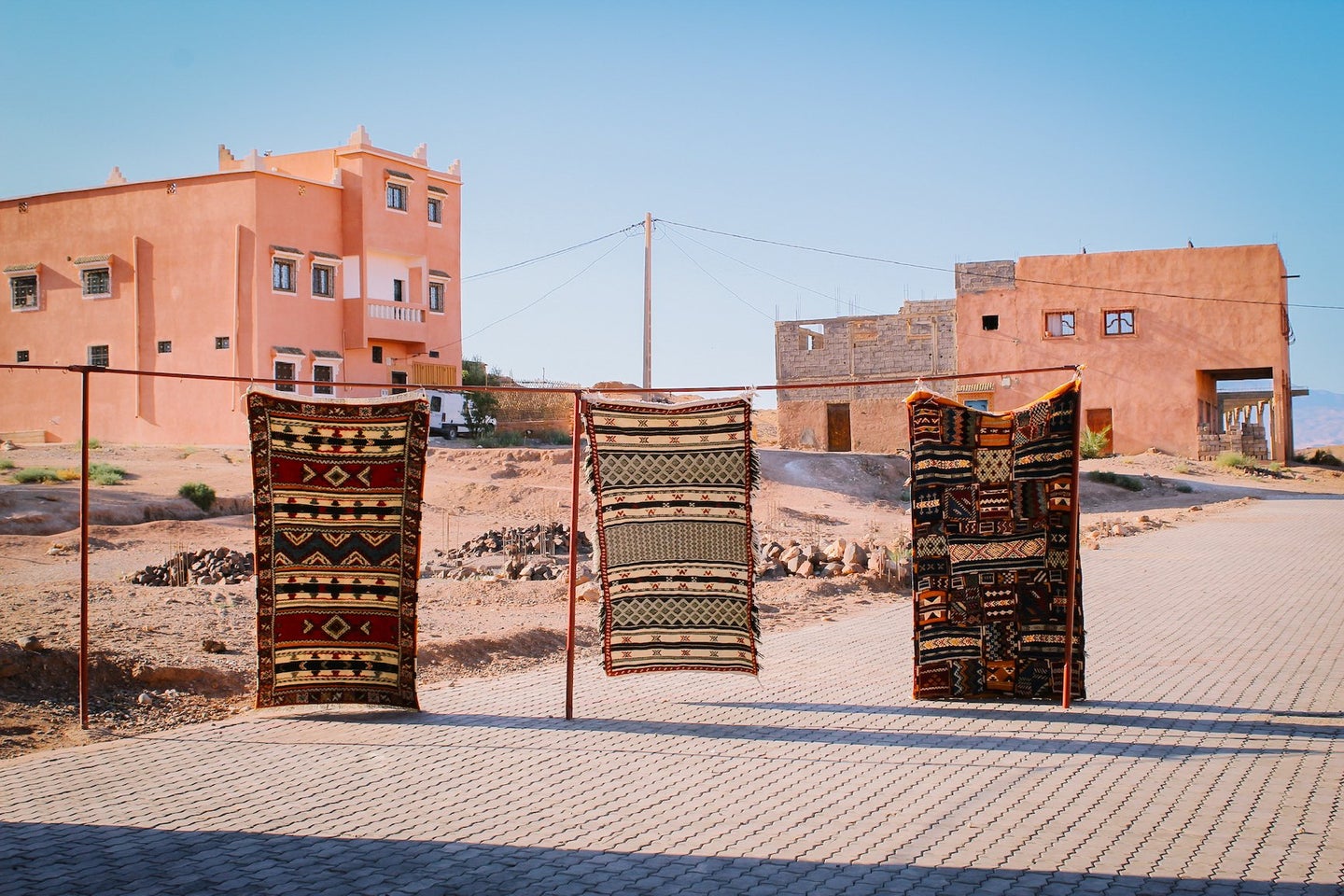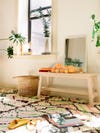This New DTC Company Is the Everlane of Moroccan Rugs
Meet Salam Hello.
Updated Sep 20, 2018 1:31 PM
We may earn revenue from the products available on this page and participate in affiliate programs.
Mallory Solomon was working in advertising when she took a trip to Morocco that would spark the next phase of her career. The California native had grown tired of her day-to-day and was looking for a way to start her own business while also giving back. She found the answer while shopping for rugs, eventually opening Salam Hello, a direct-to-consumer Moroccan textile company that puts transparency first.
“As I started to do more and more research on the Moroccan textile business, I found out that the women who are largely making the rugs were completely left out of the selling process,” she says. Since most of their rugs are sold through a brokerage system, they’re more often than not paid way less than the rugs are priced. “I thought it would be amazing to connect directly with them to tell their stories and also allow them to get compensated for the amount of work that they put into this.”
Salam Hello launched in late August with 19 one-of-a-kind rugs (and the option to get one custom-made). Basically, it’s the Everlane of Moroccan rugs: You can find out who wove your rug, how long it took, and what it’s made of.
Ultimately, Solomon hopes to help the Berber women expand their business even beyond Salam Hello. She puts 10 percent of profits back into their communities and provides them with tools to support their rug-making, whether that be a camera, smartphone, or just her continued support. “It’s a win for everyone,” she says.
Great minds think alike: Other companies like Beni Rugs, Anou, and Atlas Weaves are also making it possible to get your hands on an authentic, fair trade rug without having to board a plane. Solomon hopes that this tradition, passed down through generations, can continue to thrive—so, she shared her three tried-and-true tips to help you nab the best Moroccan rug for your home.
Ask about materials
“Make sure that the rug is made of 100 percent live wool—that means it came from a living animal, so the wool will be stronger and not shed as much. It’s also important to understand what went into the dyeing process. A lot of times, to keep prices down, bigger retailers will buy synthetic, say, pink wool, instead of going through the process of using henna and pomegranate to make it, which can make it fade faster.”
Stop searching for perfect measurements
“From a size standpoint, if you’re buying from Morocco and there’s a perfect 8’ by 10’ rug, I highly doubt that a loom woman made it. There are such beautiful imperfections in a loom-woven rug that don’t translate into the standard sizes we usually go by.
I have rugs that are like 65 years old, and during that time, there were these super-old houses that had really, really long hallways, so you’ll get these odd dimensions. If someone ever tries to sell you a vintage that’s around 4’ by 6’, there’s no way it’s vintage.”
Look on the other side
“I always flip over my rugs before buying and look really closely at the knots on the other side. If they’re close together, then you know that it’s a high-quality rug. If they’re further apart, the rug will not last as long and will likely shed.”
See more rug ideas: These Rugs Are Going Viral, and We Feel Grrreat About It 20 Gorgeous Rugs, Because We All Deserve to Be Floored Once in a While 15 Graphic Rugs That Add Instant Personality to Any Room

